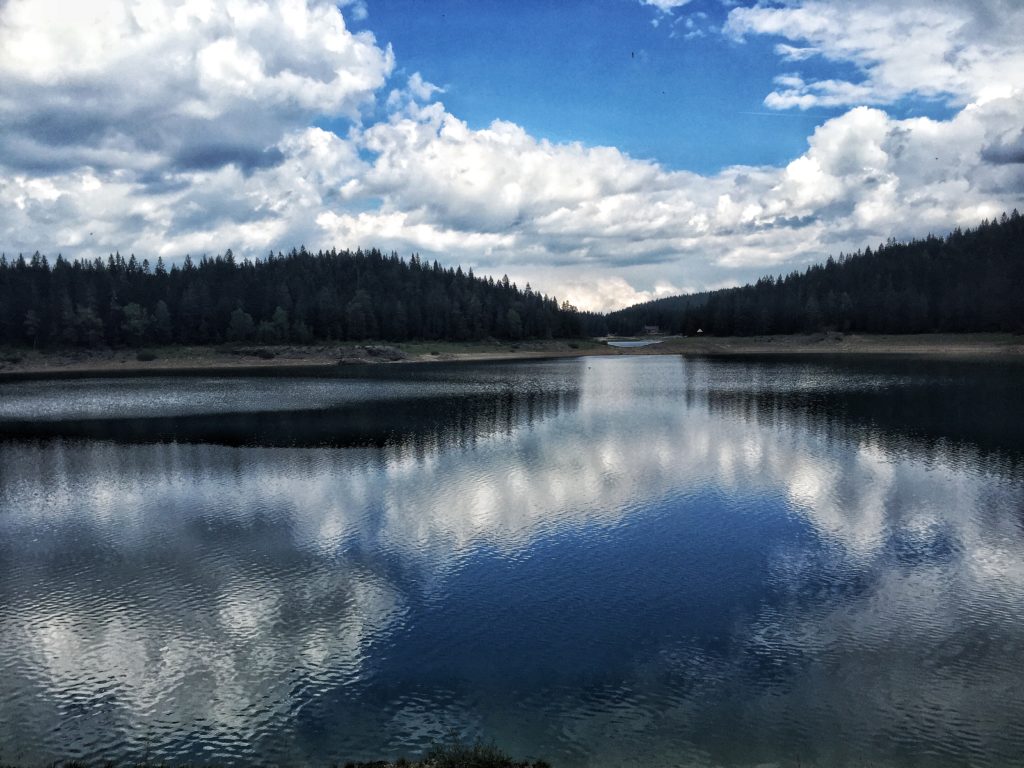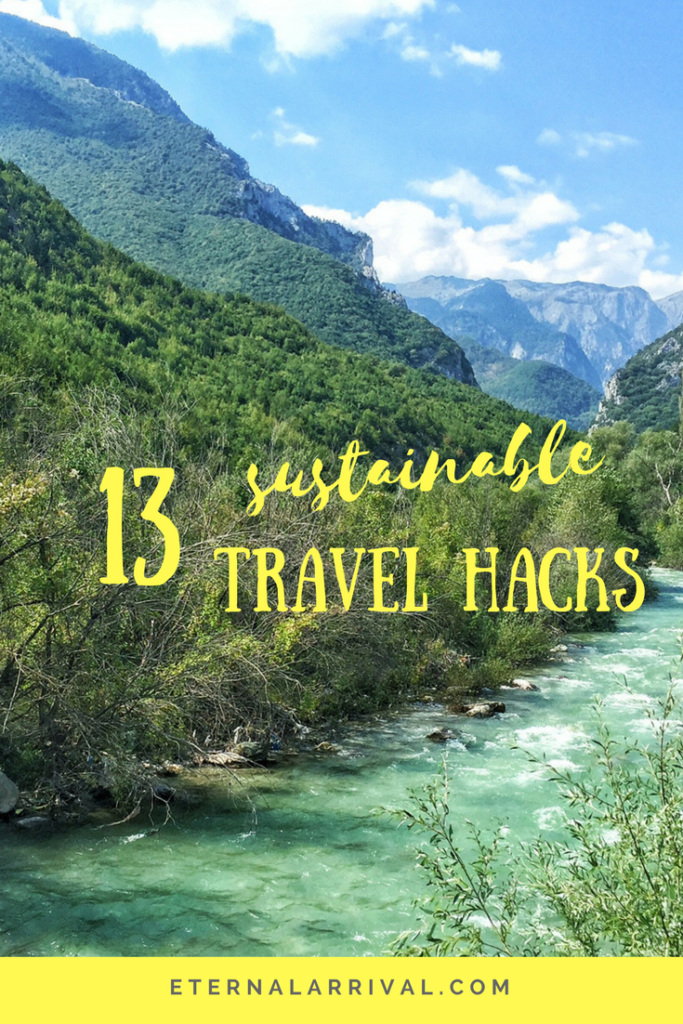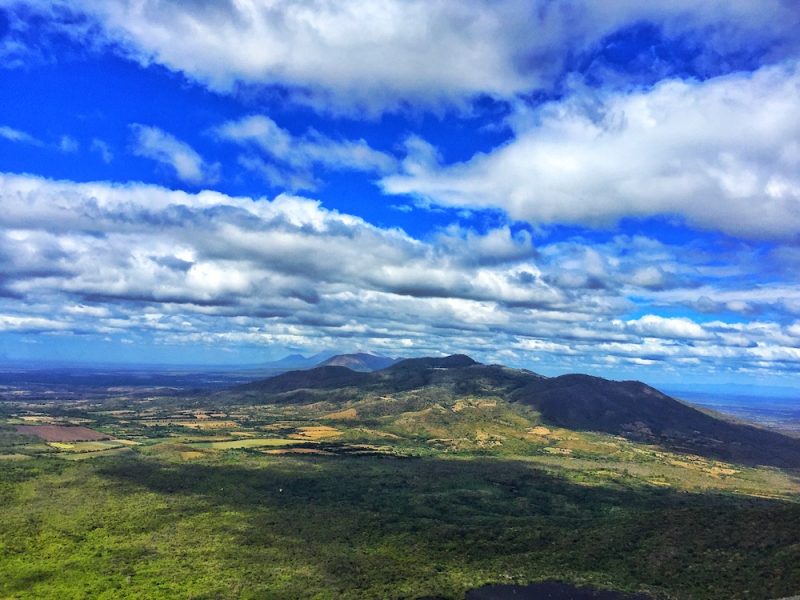I know we all want to see the world – but in order for there to be a world to see, we have to keep thinking about our impact on the planet. 2017 is the year of Sustainable Travel, and in recognition of this, I’m going to share my top tips for making sustainable travel simpler and easier to implement in your day-to-day life. While there are some things we simply can’t avoid, like carbon emissions from air and bus travel, there are other sustainable travel choices we can make that dramatically reduce our impact on the globe.
Fly less
Yeah, I know that EasyJet or RyanAir flight is cheap, but for the love of God’s green (for so long) earth, don’t zigzag your way through Europe by plane. Planes are great if you have a short amount of time and need to get from point A to point B. But once you’ve flown somewhere, try to rely on ground transport as much as possible. Check out BlaBlaCar if in Western Europe, trains and buses in Eastern Europe, and buses and minibuses in Southeast Asia, Central and South America. You’ll be helping make sustainable travel a reality and you’ll also be seeing the world the way the locals do.
Travel slower
Beyond taking fewer fights, slow travel is sustainable travel. It will help save you a bundle and save the earth some massive carbon output. You’ll also get the benefit of knowing a place more intimately beyond just the tourist hot spots.
Here are some tips on how to travel slower and like a local, no matter how much time you have.
Take a SteriPen or filtered water bottle with you
This can save tons and tons of plastic from landfill. I was carrying a Steripen, which I loved, until I left it behind in a hostel… whoops. I’ll replace it when I get back to the U.S. For now, I buy a larger water bottle (about 1 liter) and refill it at various hostels or restaurants.
I replace it about once a week to prevent bacterial growth. It’s not perfect, but it wastes way less than buying brand new bottles for the 2 to 3 liters of water I drink daily. This is one of the easiest changes you can make to make sustainable travel happen on a daily basis.
However, you can also use a water bottle with a filter like GRAYL or Lifestraw, or something with UV light like the Steripen which filters undrinkable tap water.
Take shorter, cooler showers
I’ve always been a bit of a cold water shower wuss but here in Nicaragua hot water is pretty rare and reserved for the upper echelon of travelers, namely: not me. Since I squeal like bacon in a frying pan when the water hits me, I take short, quick showers when I only have access to cold water, and I’ve taken that lesson with me to try to take shorter showers at home, too.
While I miss luxuriating in a warm shower, remember that about 90% of energy use in all water-based appliances like showers, dishwashers, and washing machines comes from heating the water. Plus you already know that saving water is dope!

Bring a small, packable tote bag or two
Keep one in each of the bags that you’re likely to use and use it whenever you’re at a grocery store or market. You may get a couple of weird looks as this isn’t exactly common worldwide yet, but it’s worth it.
Plastic grocery bags are some of the worst offenders when it comes to polluting our streets and oceans, and their impact on marine wildlife is horrible. It’s really quite a simple sustainable travel alternative to bring a small reusable tote bag. They also make a great day bag when you want to carry around a little more stuff with you
Use your grocery bags for good
If you’ve forgotten your packable tote bag (it’s okay! It happens to me) or a stern Albanian cashier wouldn’t let you leave without a bag (it’s okay! It happens to me), you’ll end up with plastic grocery bags. Don’t just throw them out, where they’ll likely blow into the wind and into an ocean. Use them to:
- protect dirty shoes from the rest of your luggage
- stash dirty clothes in until laundry day
- keep in your bag and pick up some extra litter the next time you’re seeing somewhere you wish was a little more pristine, like a beach or a hike

Make the plunge (I promise this isn’t a gross pun — no wait it is) into a menstrual cup
I wouldn’t blame you if you stopped reading now…. In case I haven’t lost you, let me rhapsodize about how amazing the menstrual cup is for female travelers. You basically never have to worry about leaking. If you’re the lucky owner of a uterus, I’m sure you’ve felt that moment of panic at some point or another when you wonder if your tampon isn’t about to betray you and make you have a Carrie moment.
As an added bonus, it keeps tampons and pads out of landfill. The average woman uses almost 250 tampons per year – that’s a whole hell of a lot of landfill. The impact is worse if you consider the plastic applicators that popular brands like Tampax Pearl often use.
Pack with care
Don’t pack more than you need, as trust me, you’ll likely get frustrated and throw it out when trying to Tetris-cram your backpack the morning before a bus ride. Bring less than you think you’ll need. If you really miss something, there’s a really good chance you’ll be able to find it somewhere out there in the world. Yay globalization?
Read more on how I traveled for half a year, from summertime in the Sahara to winter in Denmark, carry-on only!
Embrace toiletries with less packaging
One of my favorite toiletries brands is LUSH because of their commitment to reducing waste and swearing off testing on animals. Their solid shampoo is a great purchase as it’s completely plastic free!
Just buy one reusable metal tin and the shampoo bar of your choice (I’m obsessed with Seanik for my fine, limp hair). Their conditioner, moisturizer, soap, and body wash all also come in packaging-free options for the sustainable traveler.
There are several reasons to go for solid toiletries – reducing plastic use, freeing up room in your liquid allotment if traveling carry-on only, and also just reducing the chances of leaks and spills along the way.
Bring a foldable Tupperware
This is great at reducing food waste, whether you eat out at restaurants or prefer to cook in the hostel. Many restaurants use non-eco-friendly means of packaging up leftover food, such as aluminum foil, Styrofoam, or plastic containers — none of which you’ll likely ever use again. A foldable silicone Tupperware won’t take up much space when not in use, and it’s great for saving extra food.
Bring a sustainable travel cutlery set set
Skip the plastic forks and sporks and bring your own travel cutlery set with you. I got this tip from Legal Nomads‘ advice on how to eat street food more safely, but it also has the added benefit of reducing plastic waste.
Buy secondhand or higher quality firsthand clothing
Thrift stores aren’t always easy to find overseas, but when they are and you need to replenish your wardrobe, consider perusing these stores rather than buying cheap clothing. Everything you buy from a cheap street vendor means they’ll order a replacement, increasing the demand for crappily made mass-produced clothing that’s often made by people living in horrific conditions.
If I buy something firsthand, I usually pay a little extra for something well-made that I think will last longer.
Buy fewer souvenirs
I truly believe photos are the best souvenirs of a trip. But if you absolutely must buy souvenirs or risk the eternal disappointment of your grandmother, try to find ones made of naturally renewable, local resources. Local ceramics and jewelry are far better choices than Made in China products. Also consider buying edible souvenirs, like chocolates or coffee!


Comments
Post a Comment